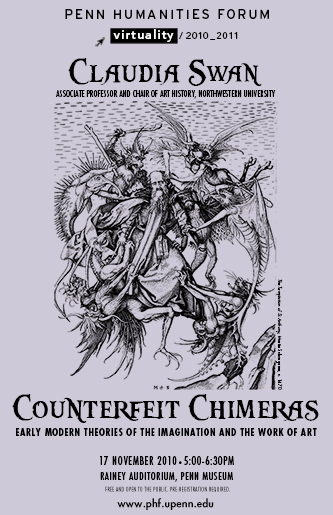European artists, poets, medico-philosophers, theologians, and demonologists of the sixteenth and seventeenth centuries were intrigued and unsettled by the capacity of the imagination to recombine visual experiences into entirely new entities. Pictures of chimeras and witches—naturalistic but non-existent creatures—embody this interest in the power of the imagination. Spiraling out from such fantastic images, art historian Claudia Swan investigates early modern concerns about truth, invention, and the veracity of illusion.
Claudia Swan is Associate Professor of Art History at Northwestern University, where she has also been Director of the Program in the Study of the Imagination and department chair. She is the author of The Clutius Botanical Watercolors: Plants and Flowers of the Renaissance (Abrams, 1998) and Art, Science, and Witchcraft: Jacques de Gheyn II (1565-1629) (Cambridge, 2005), and has co-edited with Londa Schiebinger Colonial Botany, Science, Commerce and Politics in the Early Modern World (U Penn Press, 2007).
Professor Swan has been a fellow at the Institute for Advanced Study in Princeton and at the Max Planck Institute for the History of Science in Berlin. She is spending 2010–11 as a Fellow at the Netherlands Institute for Advanced Study, working on two books, The Aesthetics of Possession, a study of 17th-century Dutch collections, and a short history of the imagination.
Associate Professor and Chair of Art History
Northwestern University



